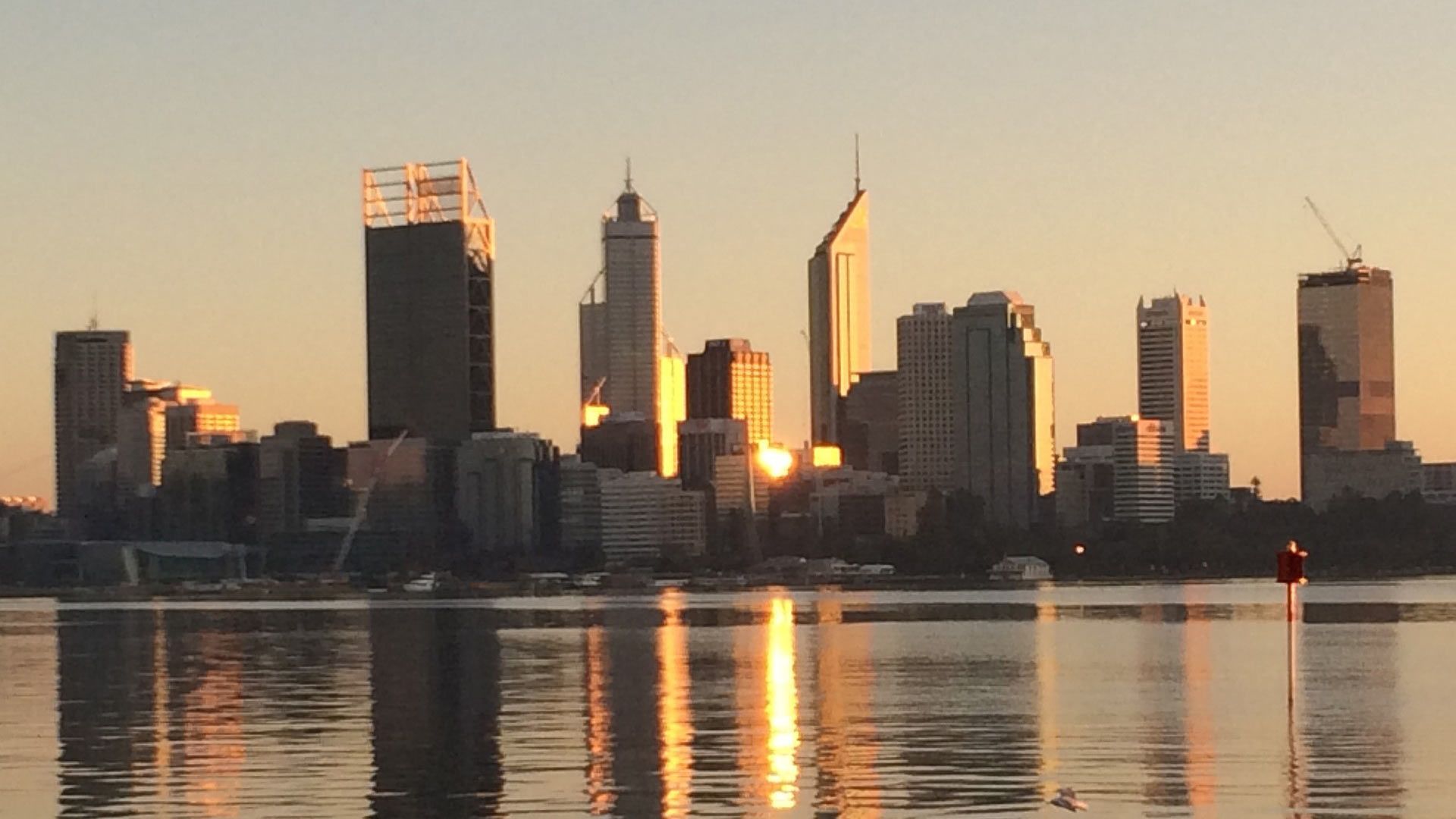Australia
Perth
Perth is on the frontier of extremes, isolated from all other major cities in Australia on the largely wild west coast. Perth’s declining water availability from both surface and groundwater sources is well recognised.

4 Levels of Action - Perth’s Progress Towards the Principles
Regenerative Water Services
• Minimise use of groundwater and scheme water from City operations and public spaces
• Supporting partner of Perth’s Waterwise Office Program
• Partner organisation of the CitySwitch Green Office Program
• Commitment to complete an ‘Alternative Water Sources for Irrigation Feasibility Study’
• Commitment to implement and promote water sensitive urban design
• Promote and support increased retention, reuse and use of nonscheme water sources within new and existing developments, precincts, and buildings in the city
Water Sensitive Urban Design
• Review and improve design guidelines, approvals processes, incentives and compliance mechanisms to facilitate environmentally sustainable design and improve environmental performance of new buildings
• Work with stakeholders to prepare for, and positively adapt to, climate change risks through creation of natural spaces, facilitation of climate responsive built form, and risk mitigation strategies
• Strengthen community connection and increase community access to the natural environment
• Implement an Urban Forest Plan
Basin Connected Cities
• Complete a Water Sensitive City Transition Study
• Monitor and improve water quality discharging into the river and wetlands
• Construction of Point Fraser water quality treatment wetland
• Signatory to the WALGA Declaration on Climate Change and Compact of Mayors
Water-Wise Communities
• Collaborate with stakeholders to improve the quality of inflows into the Swan River and coordinate maintenance of groundwater quality and riparian areas
• Publically report climate change mitigation and adaptation benchmarking through the Carbon Disclosure Project
• Collaborate with stakeholders to improve environmental performance and adopt environmental best practise in current and new development
• Collaborative working arrangements developed with the CRC for Water Sensitive Cities and the Water Sensitive Transition Network
• Collaborate with multidisciplinary teams to implement the City’s Environment Policy
• Increase understanding of environmental sustainability within the City of Perth organisation and community to build capacity to improve environmental performance
City Water Stories
Amsterdam
Since a cloudburst in the summer of 2014 and many more severe cloudbursts since then in other regions of the Netherlands, the urgency for a way to adapt this buzzing international city grew. Hence Waternet, the well-known innovative water utility of Amsterdam and its surroundings, created Amsterdam Rainproof.
Copenhengen
Copenhagen is a northern harbour city which has experienced a number of severe rainfall events, namely cloudbursts, with the largest pouring down in July 2011. The damages amounted to around 1 billion US dollars, and climate projections predict even larger events in the future. Protecting citizens and businesses from the impacts of climate change, while also continuing to secure high quality drinking water for a growing population are the concerns related to water.
Dakar
Dakar’s urban population is exploding with an annual growth rate of 2.5% and urbanisation rate of 97.2%. This massive urban expansion leads to overpopulation and construction in restricted areas, creating illegal slums without planned infrastructure including proper drainage and sewage systems.
Gothenburg
Built into a low-lying swamp area near the Göta River estuary, Gothenburg finds itself in a strategic yet vulnerable place. Flood risks and sea level rise are the two most important challenges the city is now facing.
Kampala
Kampala is Uganda’s largest city and is located at the periphery of Lake Victoria, Africa’s largest fresh water lake. Kampala is rapidly growing, with economic opportunities driving the rural-urban migration, and consequently increasing the rate of informal settlements.
Kunshan
Due to the city’s low-lying nature, Kunshan, a city in China’s Jiangsu Province, has faced frequent inundation throughout time.
Lyon
Lyon, the beautiful French city at the intersection of the Rhone and Saone rivers, is expecting some changes.
Shenzhen
The city of Shenzhen was established in 1979, and in a swift 36 years, this tiny border town of just over 30,000 people has grown into a modern metropolis. However, rapid urbanization has brought with it many challenges, including serious water crises in the form of stormwater pollution and flood risks.
Singapore
This international port city is no stranger to shifting tides. With limited land to collect and store rainwater, Singapore has faced drought, floods and water pollution in their early years of nation building.
Sydney
The millennium drought affected all of Australia, and certainly it’s star city Sydney. This drought caused serious water security concerns for Sydney in the past, and further strain on the current water supplies is expected into the future.
Xi'an
Xi’an is located in the middle of the Yellow River basin, one of the largest river basins in the world. Even with all this water around, the city still faces severe water shortages for a growing population.
Subscribe to our newsletters
IWA and sector updates
to your inbox
Follow us